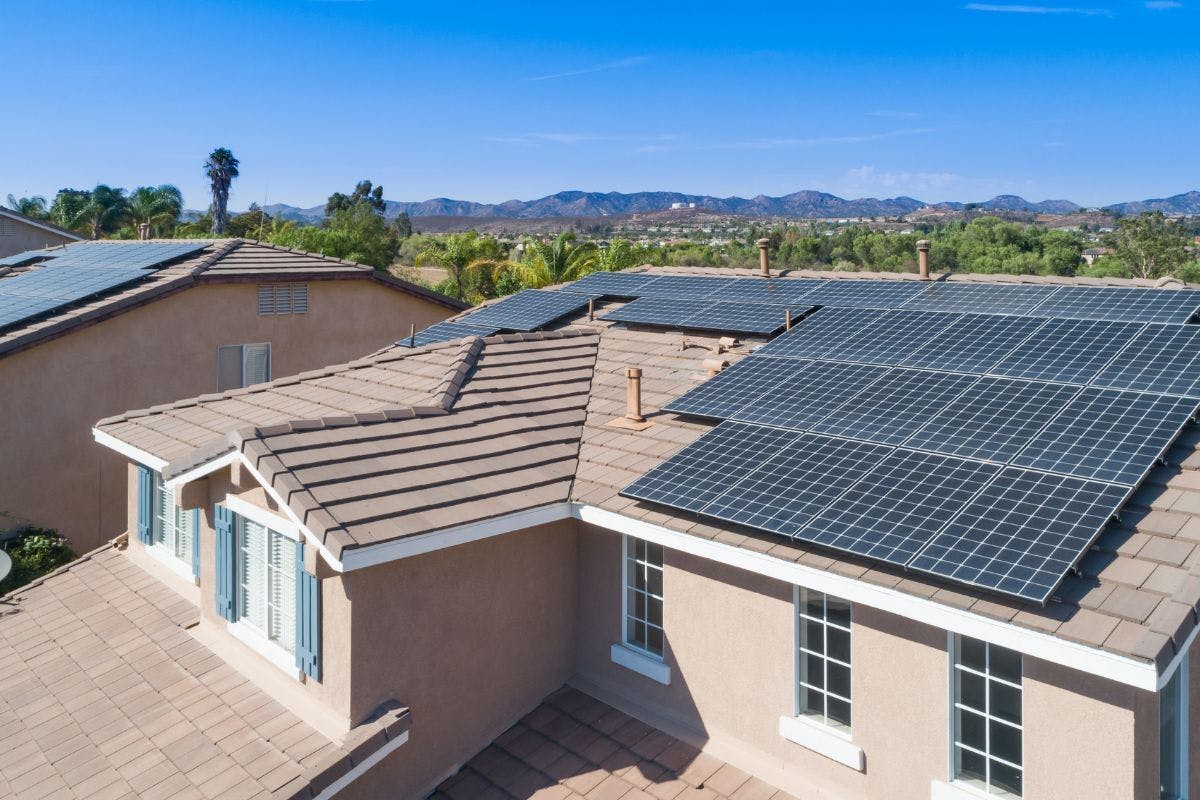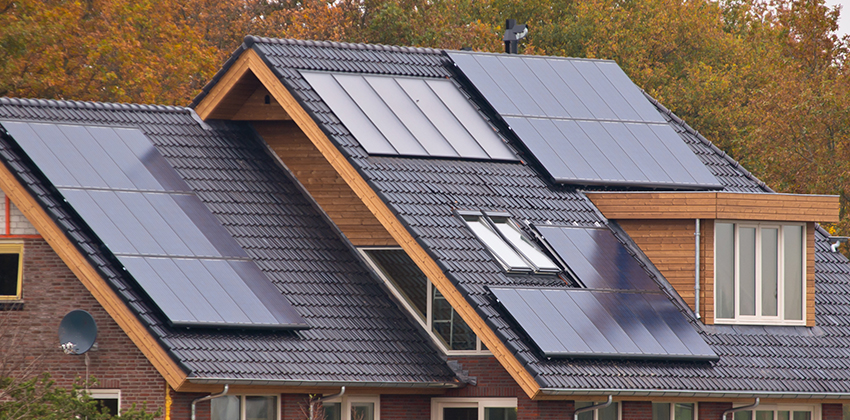Choosing the Best Solar Company for Your Home Project
Wiki Article
Discovering the Various Kinds of Solar Panels and Their One-of-a-kind Advantages
The landscape of solar panels offers various choices, each with unique advantages matched to different applications. Monocrystalline panels stick out for their efficiency and appearances, while polycrystalline designs appeal to budget-conscious consumers. Thin-film modern technology offers adaptability in installment. Ingenious styles like bifacial and building-integrated photovoltaics further improve the appeal of solar energy. Understanding these distinctions is essential for making informed decisions. The question stays: which type will best meet details energy requirements?Monocrystalline Solar Panels
Various kinds of solar panels are available, monocrystalline solar panels are usually pertained to as the most efficient option. These panels are made from a solitary crystal structure, generally silicon, which allows them to transform sunshine into power extra effectively than other types. The performance prices for monocrystalline panels can vary from 15% to over 22%, making them a prominent selection for residential and business installations where area is limited.
Polycrystalline Solar Panels
Polycrystalline solar panels are generated using a distinct manufacturing procedure that includes melting several silicon crystals with each other. This approach can result in advantages such as reduced manufacturing prices, making them a preferred selection for several customers. However, their performance and efficiency aspects may vary compared to various other kinds of photovoltaic panels, necessitating cautious factor to consider.Production Process Benefits
The manufacturing process of polycrystalline solar panels provides a number of benefits that add to their charm in the eco-friendly energy field. The production makes use of silicon scrap, which lowers waste and decreases material expenses, making it financially viable. Unlike monocrystalline panels, the manufacturing of polycrystalline panels involves less complex and much less energy-intensive techniques, causing a smaller sized carbon impact. Additionally, the casting procedure permits the development of numerous cells concurrently, boosting effectiveness in manufacturing. This technique additionally leads to an extra consistent framework, which can boost the general performance and long life of the panels. Polycrystalline solar panels provide a cost-efficient service for customers while advertising sustainable manufacturing methods within the sector.Effectiveness and Performance Aspects
Exactly how do performance and efficiency factors affect the performance of polycrystalline photovoltaic panels? These panels generally show lower effectiveness rates, balancing around 15-20%, contrasted to their monocrystalline counterparts. Variables such as temperature sensitivity, shielding, and the angle of installation greatly affect their performance. Polycrystalline panels tend to carry out better in cooler environments however might battle in high temperatures, bring about decreased result. Furthermore, their performance can be impacted by dust and particles buildup, demanding normal upkeep. Despite these obstacles, polycrystalline panels are extra affordable and supply a solid balance between price and performance. Recognizing these effectiveness and efficiency aspects is important for customers looking for to optimize solar energy production and general system performance.Thin-Film Solar Panels
Thin-film solar panels represent a lightweight and functional choice in the solar energy landscape. These panels are built by transferring several thin layers of solar product onto a substrate, which can include glass, plastic, or metal. This manufacturing process enables higher versatility in layout and applications compared to traditional crystalline solar panels.
Thin-film technology normally includes reduced efficiency prices, yet it compensates for this with minimized manufacturing prices and boosted performance in low-light problems. Their light-weight nature makes them suitable for installation on diverse surfaces, consisting of curved frameworks and cars. In addition, these panels can be incorporated into structure materials, using aesthetic advantages together with energy generation.
Bifacial Solar Panels
Bifacial solar panels are getting attention for their enhanced efficiency and performance, as they can record sunlight from both sides. This dual-sided style permits increased energy manufacturing, specifically in reflective settings. Furthermore, their installation provides possible price advantages, making them an appealing alternative for numerous applications.Performance and Performance
The efficiency and performance of solar panels are vital consider determining their performance in power generation, with bifacial solar panels sticking out for their innovative layout. These panels feature photovoltaic cells on both sides, permitting them to record sunshine from several angles. This dual-sided ability enhances power output, especially in atmospheres with reflective surface areas, such as snow or sand. Bifacial solar panels can raise power production by 10-20% contrasted to standard monofacial panels. Their ability to harness indirect sunlight adds to their general performance, making them a compelling choice for different applications. Advancements in technology proceed to enhance their efficiency metrics, solidifying their place in the renewable energy landscape as a highly reliable service for solar power generation.installation and Cost Benefits
When considering the advantages of bifacial solar panels, the installation process and price advantages are significant elements that can affect decision-making for both business and property applications. Bifacial panels can be mounted on different structures, consisting of rooftops and ground installments, permitting versatile deployment. Their ability to soak up sunshine from both sides boosts energy generation without requiring added panels. This efficiency can lead to decreased total installation prices, as less devices may be needed to attain preferred power outcomes. In addition, their longevity usually translates to decrease maintenance expenditures over time (Residential Solar Installation). Consequently, the long-term economic advantages, integrated with installation adaptability, make bifacial solar panels an attractive selection for those looking for lasting energy servicesBuilding-Integrated Photovoltaics (BIPV)
Building-Integrated Photovoltaics (BIPV) stand for a considerable development in solar innovation, perfectly including solar batteries right into building products such as roofs, facades, and windows. This cutting-edge method not only generates renewable resource but also improves the looks and capability of structures. BIPV systems can change conventional building materials, minimizing the overall expense of building while contributing to energy efficiency.The integration of solar innovation into architectural design enables for much better space browse around these guys usage, as these systems can be set up without requiring additional land. In addition, BIPV solutions are personalized, enabling engineers to create unique layouts that match the structure's overall look. The twin functionality of BIPV-- serving both as a power generator and a structural part-- offers significant advantages in urban settings where room is limited. As awareness of lasting structure methods expands, BIPV is coming to be a progressively appealing choice for home owners and developers alike.
Concentrated Photovoltaic (CPV) Solutions
Concentrated Photovoltaic (CPV) systems stand for an innovative solar innovation that uses lenses or mirrors to focus sunshine onto high-efficiency solar cells. This ingenious technique allows for the collection of considerably even more solar energy than traditional photovoltaic systems. By concentrating sunshine, CPV systems can accomplish higher performances, commonly going beyond 40%, making them specifically ideal for locations with high straight sunshine.Furthermore, CPV systems typically require much less land area contrasted to traditional solar panels, as they generate even more power from a smaller sized impact. These systems typically include monitoring systems that change the placement of the lenses or mirrors to comply with the sunlight's movement, optimizing energy capture throughout the day. Nevertheless, CPV innovation is finest fit for details geographic areas, where direct sunlight is plentiful, restricting its applicability in areas with frequent cloud cover. Overall, CPV systems present a promising alternative for improving solar power manufacturing in optimal settings
Contrast of Photovoltaic Panel Effectiveness and Cost
Different solar panel modern technologies exist, their performance and price can significantly differ, influencing consumer options and market characteristics. One of the most usual kinds-- monocrystalline, thin-film, and polycrystalline-- display unique characteristics in performance and prices. Monocrystalline panels often tend to supply the highest performance prices, often going beyond 20%, however they normally include a higher rate tag. In comparison, polycrystalline panels are generally a lot more inexpensive, with effectiveness around 15-20%, making them a preferred selection for budget-conscious customers. Thin-film technologies, while much less efficient at around 10-12%, give adaptability and lower installation prices, attracting particular applications.Ultimately, picking the right solar panel involves considering the balance in between reference effectiveness and price. Consumers should consider their power requires, spending plan restrictions, and long-term cost savings potential, as these aspects will determine the very best option for their solar power system.
Often Asked Inquiries
The Length Of Time Do Solar Panels Generally Last Before Requiring Replacement?
Solar panels usually last between 25 to three decades prior to needing substitute. Their resilience depends upon different aspects, consisting of high quality, setup, and regional ecological conditions, which can impact their effectiveness and longevity in time.
Can Solar Panels Job in Cloudy or Rainy Issues?
Solar panels can undoubtedly work in stormy or cloudy conditions, albeit at reduced performance. They still catch diffuse sunlight, permitting energy generation, though power result may be substantially less than on warm days.What Maintenance Is Required for Solar Panels?
Routine maintenance for solar panels consists of regular cleansing to get rid of dust and debris, examining for damage, ensuring connections are protected, and examining system efficiency. Routine check-ups can boost performance and straight from the source prolong the life-span of the panels.Exist Any Kind Of Ecological Influences From Production Solar Panels?
Yes, making solar panels can have environmental impacts, consisting of resource removal, power consumption, and waste generation. Nonetheless, improvements in modern technology purpose to decrease these effects, promoting even more lasting techniques in production and reusing procedures.Exactly how Do I Select the Right Solar Panel for My Home?

Various types of solar panels are available, monocrystalline solar panels are typically related to as the most efficient alternative. Thin-film solar panels stand for a versatile and light-weight option in the solar energy landscape. The effectiveness and efficiency of solar panels are crucial variables in identifying their performance in energy generation, with bifacial solar panels standing out for their cutting-edge layout. Building-Integrated Photovoltaics (BIPV)
Building-Integrated Photovoltaics (BIPV) represent a significant evolution considerable solar technology, innovation incorporating solar cells into building materials structure as roofings, roofs, and facades. Concentrated Photovoltaic (CPV) systems stand for a sophisticated solar technology that mirrors or uses lenses to focus sunshine onto high-efficiency solar cells.
Report this wiki page